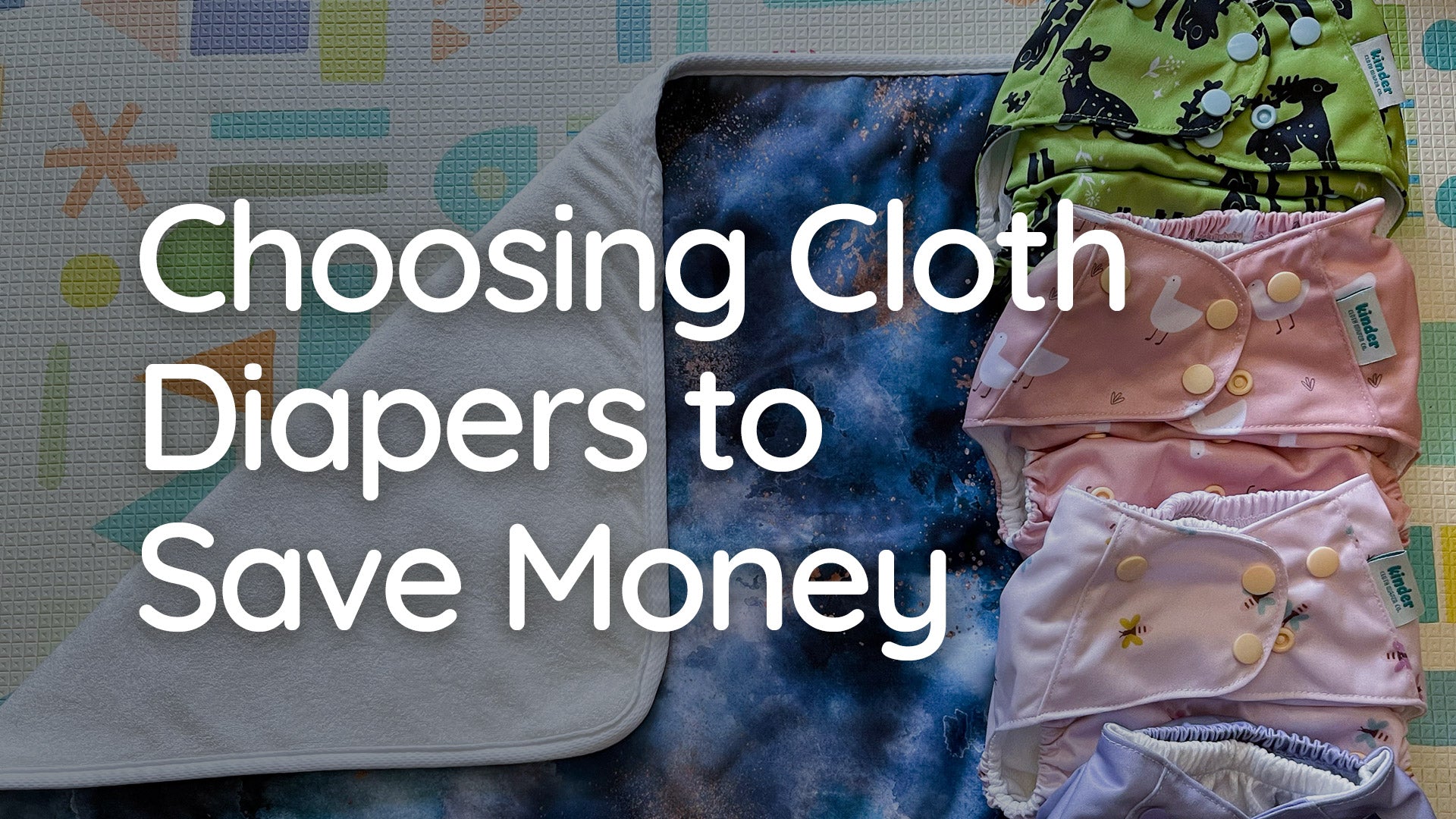I began my journey cloth diapering with pocket style diapers that I purchased secondhand from Facebook marketplace. This was a great place for our family to start, however as I delved deeper into the world of cloth diapers, I was blown away by the sheer variety of styles available. The more I educated myself on cloth diapers, the more I couldn’t resist trying different styles.
Slowly, I began incorporating various different types of diapers into my daily cloth diapering routine and I finally found what worked best for me and my little one. Here is what I learned along the way.
All In Ones (AIOs)
All in ones are the one-stop-shop when it comes to cloth diapers. The waterproof covering and absorbency are built into the diaper making them similar to disposables. Due to this similarity, they can be a simple and convenient choice, especially for beginners.
One potential disadvantage of all in one style diapers is because the absorbency is sewn in these diapers, they will typically have longer dry times. It also can be slightly more difficult to remove poop from them as there may be many layers that need to be cleaned. It can also be trickier to adjust absorbency as it is already sewn into the diapers. You can always add to AIOs, but you can't take away absorbency if it's too much for your baby.
All in Twos (AI2s)
All in two diapers are similar to all in ones but instead of sewn in absorbency the absorbent part of the diaper typically will snap in. With snap in inserts diaper prep time can be reduced in comparison to some other systems. In addition, this snap in system can also allow for the insert to be changed while leaving the shell on, meaning fewer shells being used daily. With the inserts being removable dry times can also be shorter than that of the all in ones. One limitation of this system is that it can be difficult to customize absorbency once baby outgrows the designated inserts.
Covers
Covers are a great option when it comes to the waterproofing part of a diaper system. They are very versatile and can be paired with any type of absorbency (just avoid using microfiber against the skin). This system is also highly cost-effective as they can be wiped between changes and reused if there is no poop involved, meaning fewer are needed daily.
Pockets
Pockets are another option for a waterproofing layer in a diaper system. These diapers have a pocket or sleeve that absorbency can be stuffed into. The inside of these diapers features a moisture wicking fabric liner that sits between baby and the absorbency. This liner layer is beneficial in keeping baby dry and preventing poop from getting on the absorbency leaving one easy to clean surface. However, some families find the time required to stuff the diapers a bit of a drawback.
Fleece/Wool Covers
Finally in the covers area we have fleece/wool. These covers are made entirely of water-resistant fabrics with wool being the natural option and fleece being synthetic. Wool covers can be reused multiple times as long as there isn't any poop involved. It is important to note that wool covers need to be lanolized to maintain their water resistance and require some special wash instructions to keep them in good condition. Fleece covers may not be reusable for multiple changes like wool, but they are still highly effective in keeping your little one dry and comfortable. Fleece covers also do not need any special wash routine making them slightly more beginner friendly. Both are wonderful cover options and are more breathable than a pul/tpu cover.
Fitteds
Fitted diapers are all absorbency. Their many layers of fabric and 360 coverage mean they are great for heavy wetters and nighttime use. Due to their absorbent nature, it is a good idea to pair fitteds with some type of waterproofing cover to keep them leak free. They also tend to need some extra dry time because they hold so much liquid.
Flats/Preflats/Contours
When people think of cloth diapering this is typically the first type of cloth diaper they will think of. These different wrap around absorbencies are typically secured with pins or snappies making them a very custom fit for baby. Due to the amount of fabric in this type of diaper they are highly customizable and great for heavy wetters and sleep times. They clean well and dry quickly because all layers can be unfolded to one or two layers once off baby. This is an absorbency only so remember to pair it with a cover of some type to maintain water resistance and avoid any leaks.
Inserts
Inserts are the absorbent part of any diapering system. They can range anywhere from store bought natural fiber inserts, to flour sack towels, to microfiber, to cut up cloth. The beauty is anything absorbent can be used as an insert in diapers so diapering can be customized entirely based on budget.
With so many diaper styles available, it can be overwhelming to choose the right system for you. Each system has its pros and cons, and what works well for one person might not work well for another. Personally, I've found that using a variety of styles in my daily routine is the perfect fit for me. Don't be afraid to try different options and see what works best for you and your baby!













